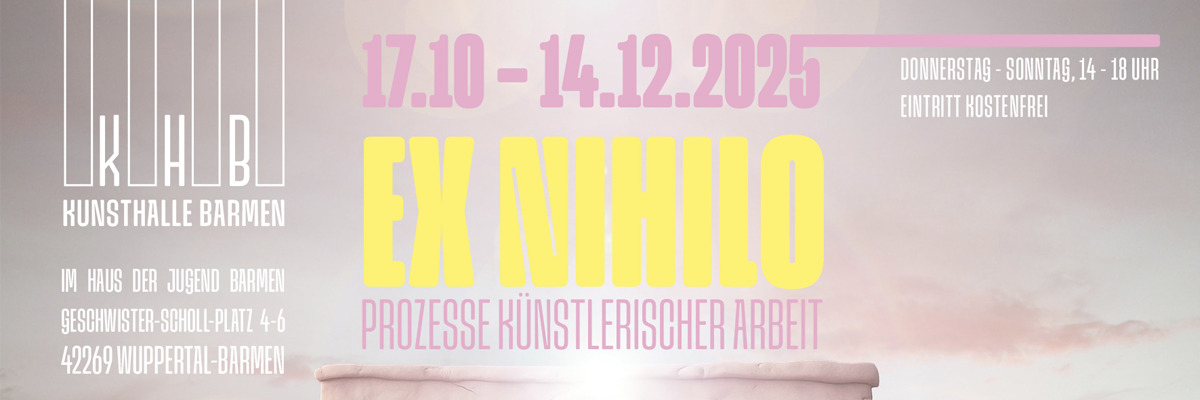
Yvan Alvarez
Zwischenraum
Project Info
- 💙 Salle Crosnier, Société des Arts, Geneva
- 🖤 Yvan Alvarez
- 💜 Anthony Huberman
- 💛 Greg Clément, YAL
Share on
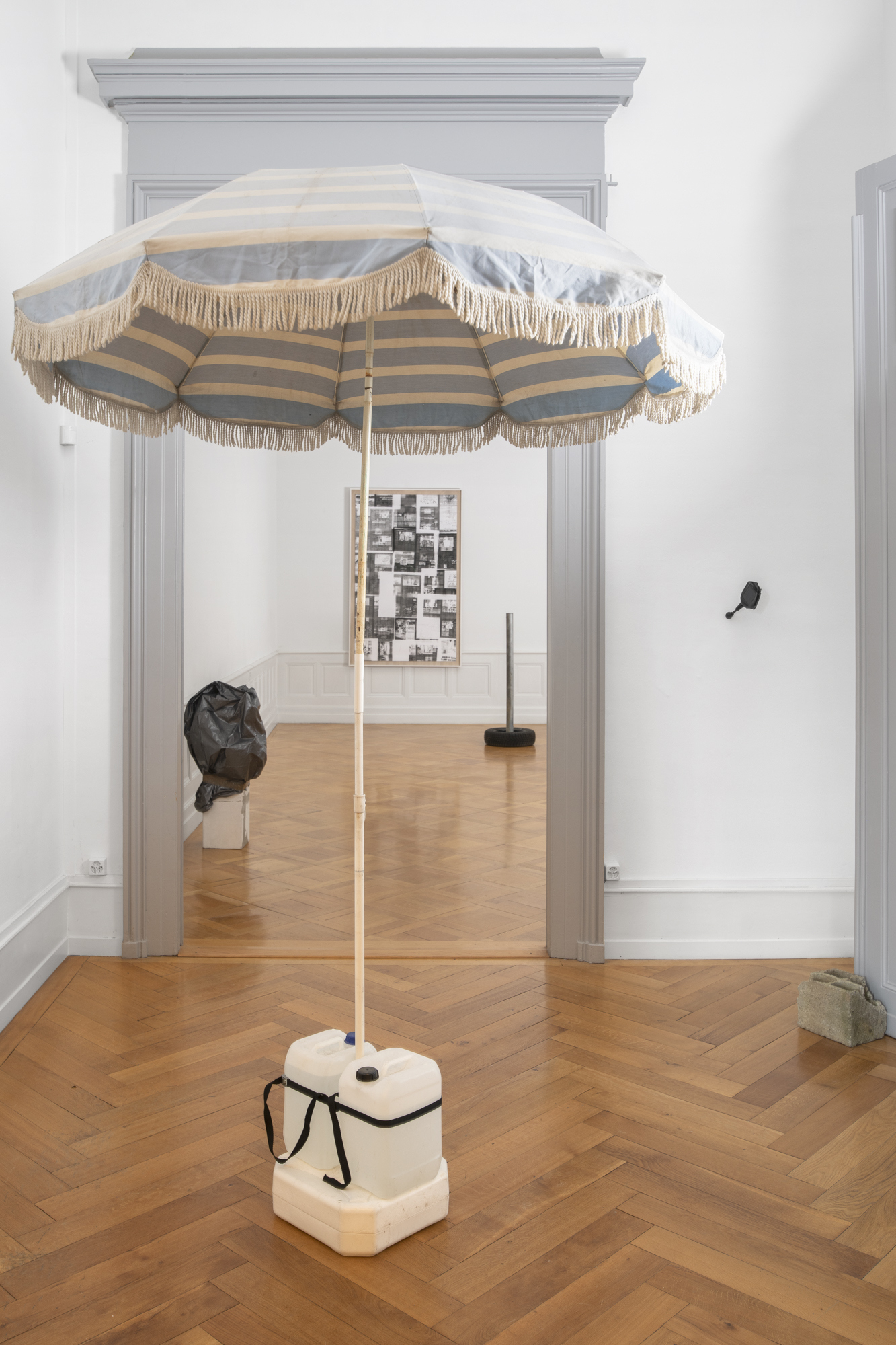
Yvan Alvarez, ZWISCHENRAUM, exhibition view, 2023
Advertisement
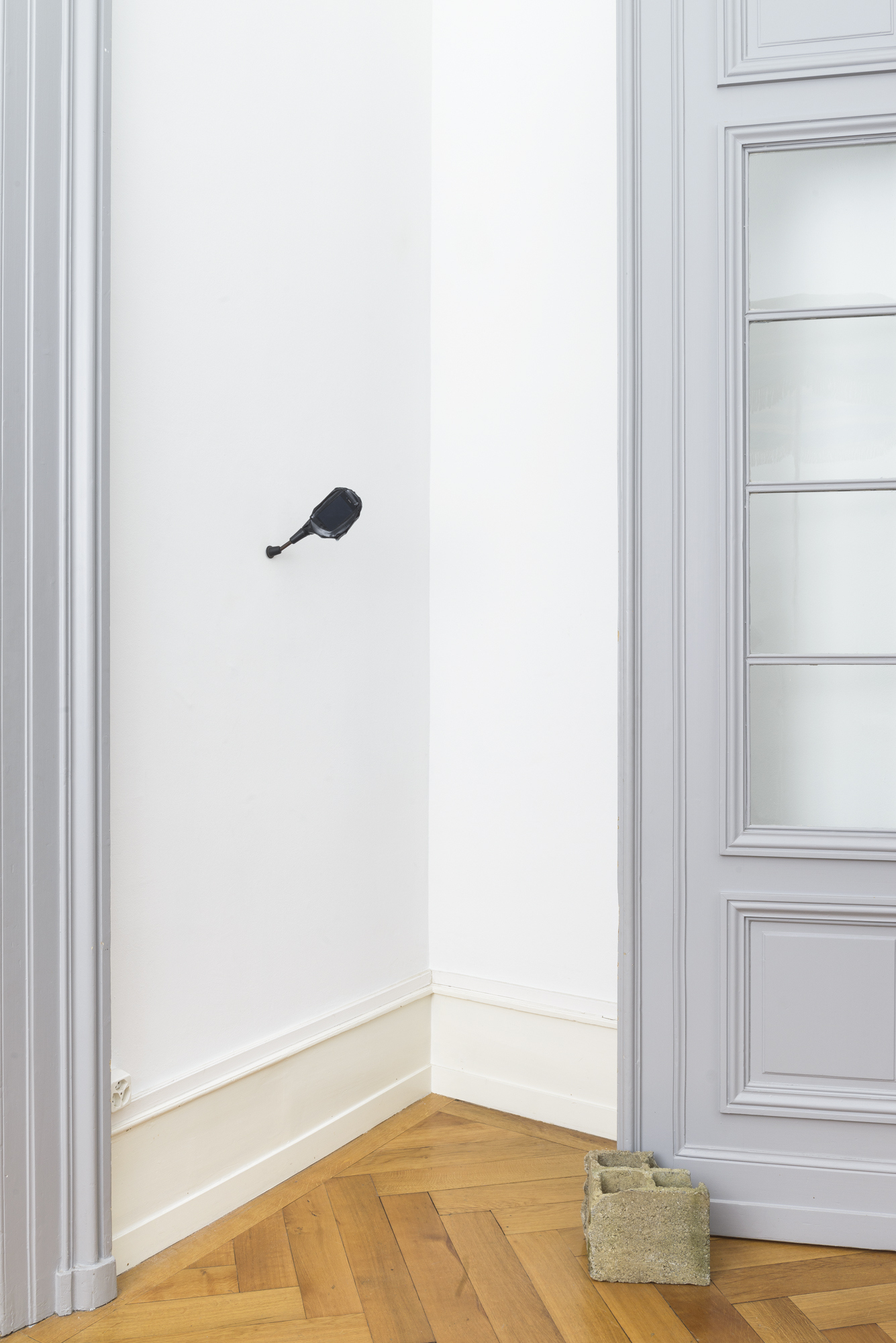
Yvan Alvarez, Rearview mirror (makeshift devices), rearview mirror, iPhone, tape, 20 x 24 x 10 cm, 2023
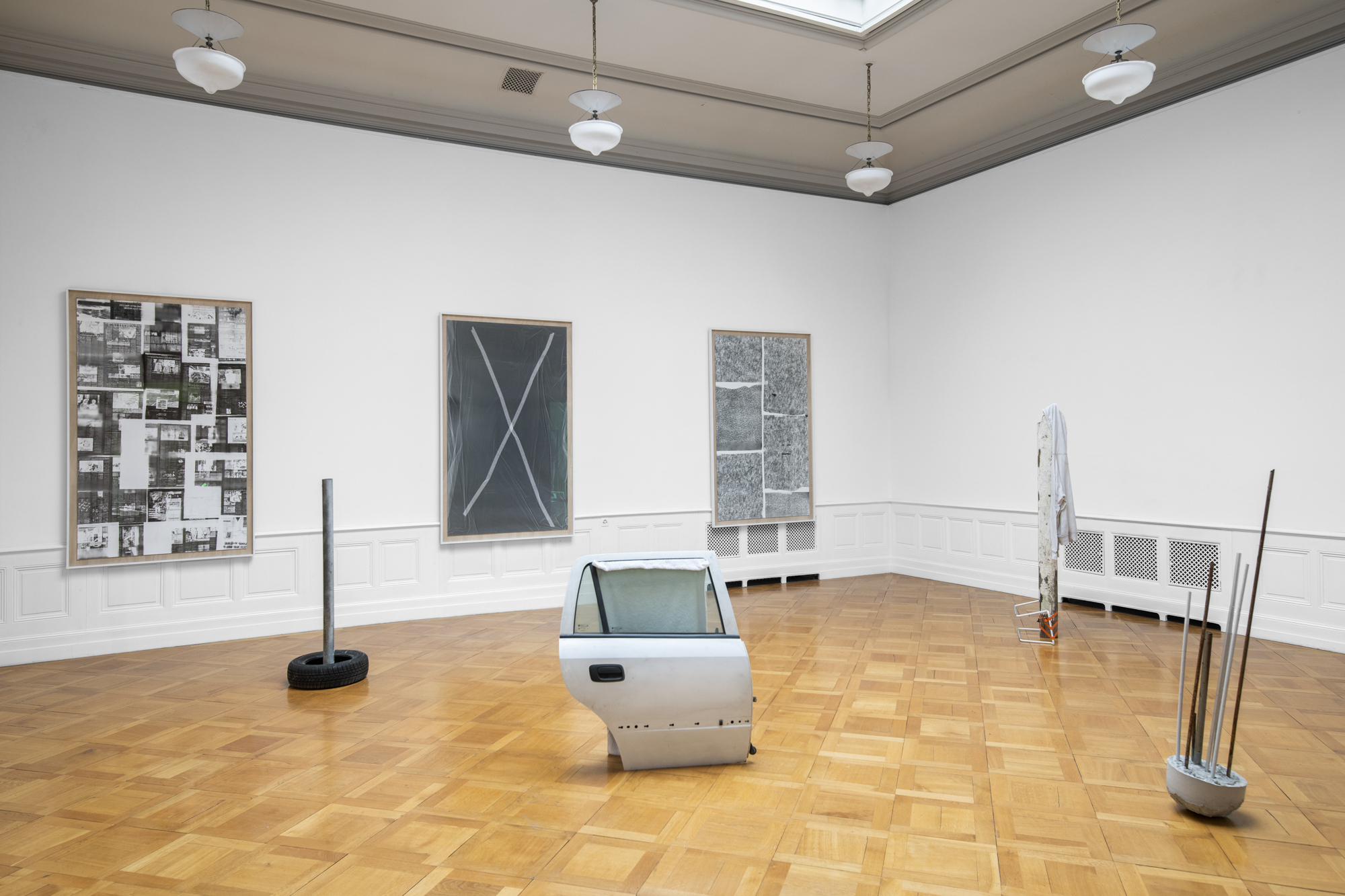
Yvan Alvarez, ZWISCHENRAUM, exhibition view, 2023
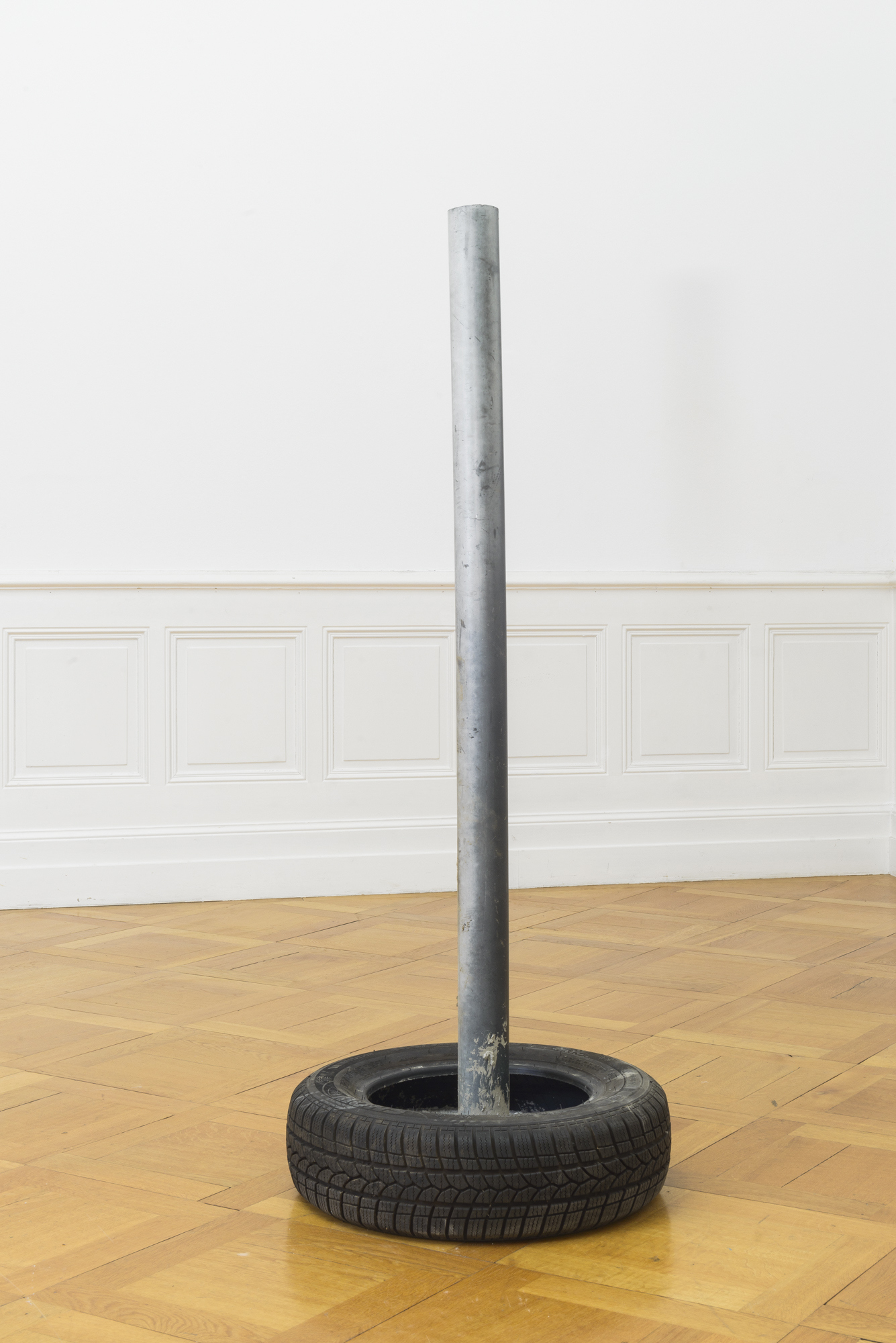
Yvan Alvarez, Parking (makeshift devices), tire, PVC, concrete, 143 x ø 55 cm, 2023
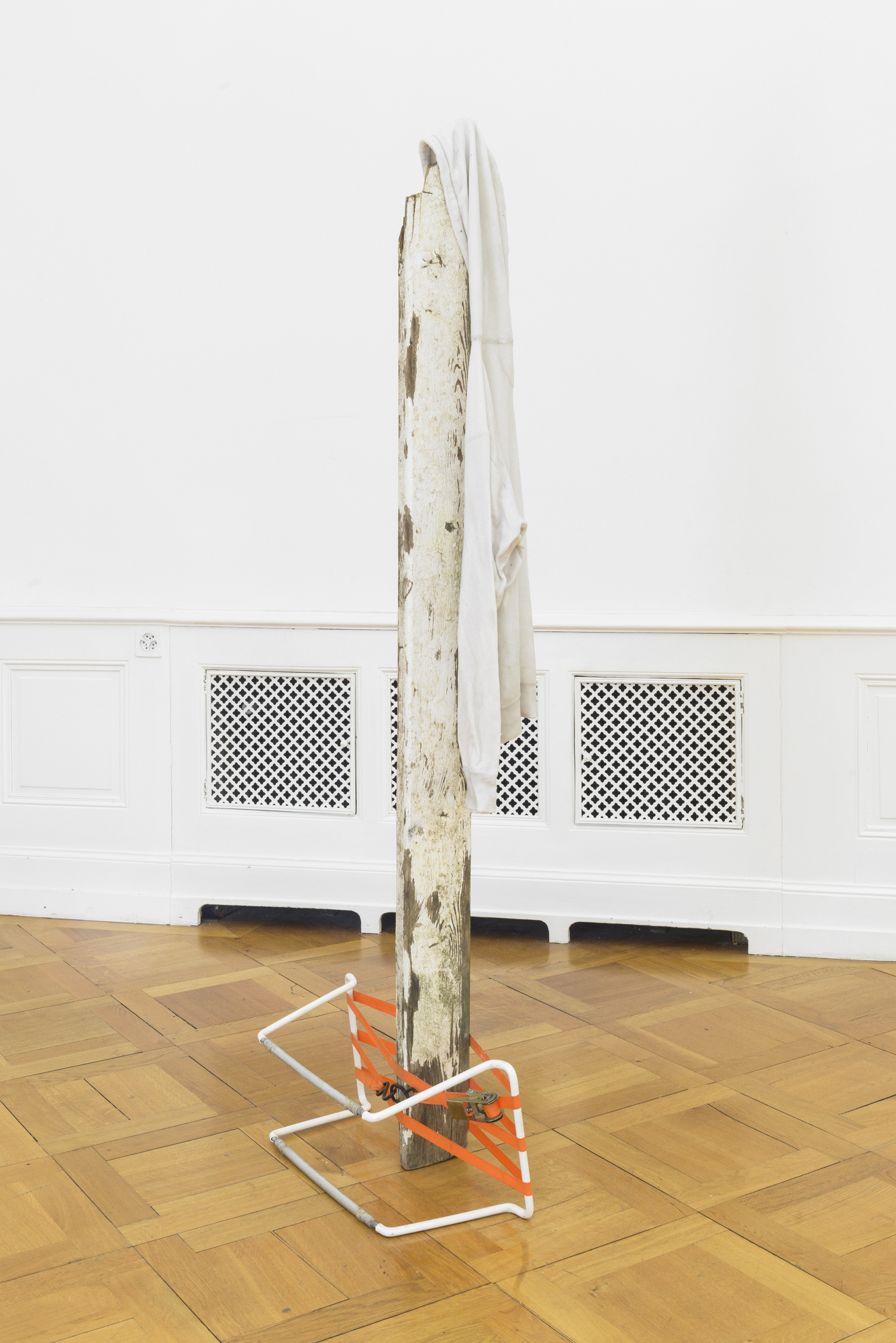
Yvan Alvarez, Hoodie (makeshift devices), wood, metal, hoodie, wax, strap, 192 x 60 x 31 cm, 2023

Yvan Alvarez, Column (makeshift devices), metal, plastic, concrete, 152 x ø 30 cm, 2023
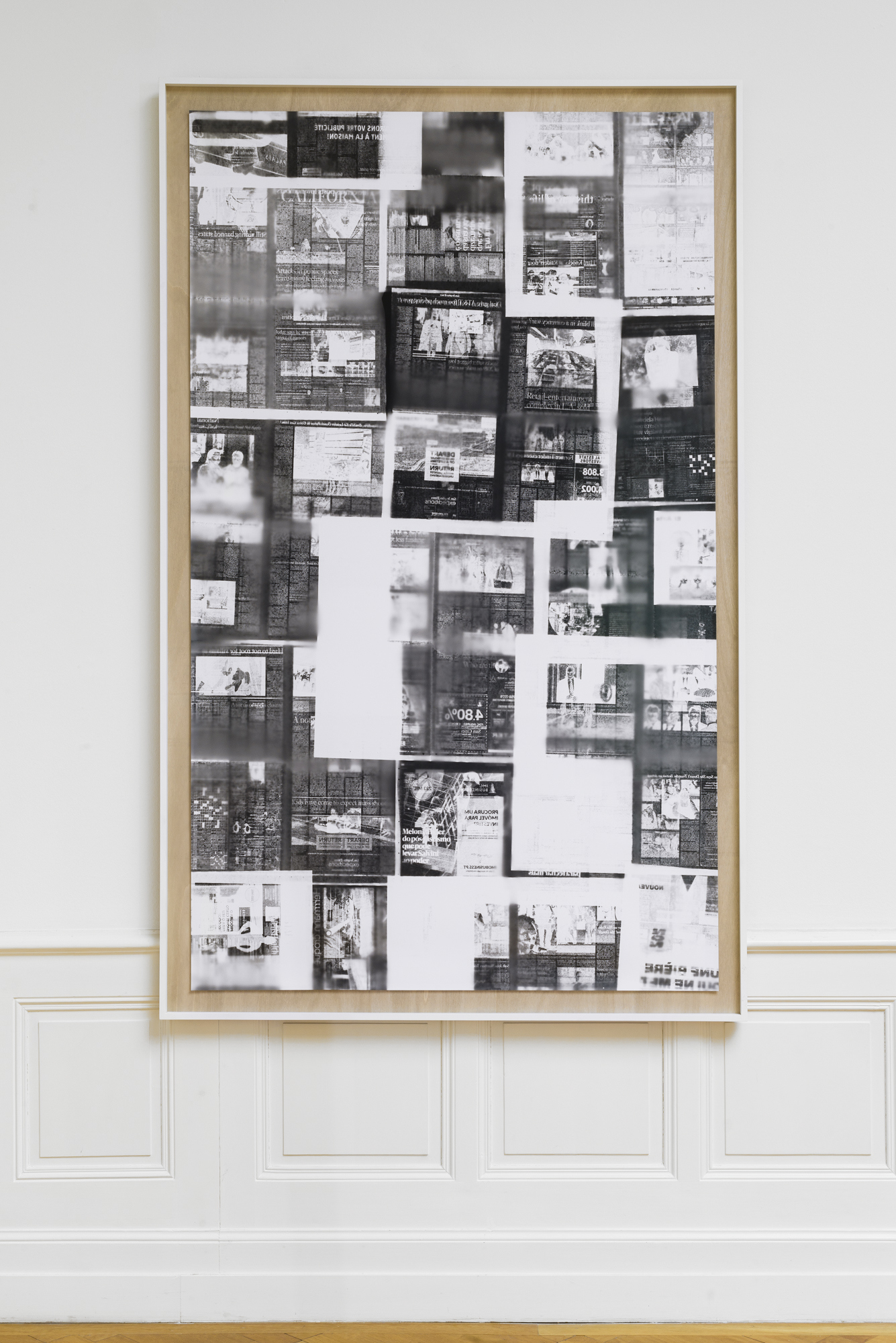
Yvan Alvarez, Meanwhile (photogram #2), photographic paper, frame, 222 x 140,5 x 4 cm, 2023
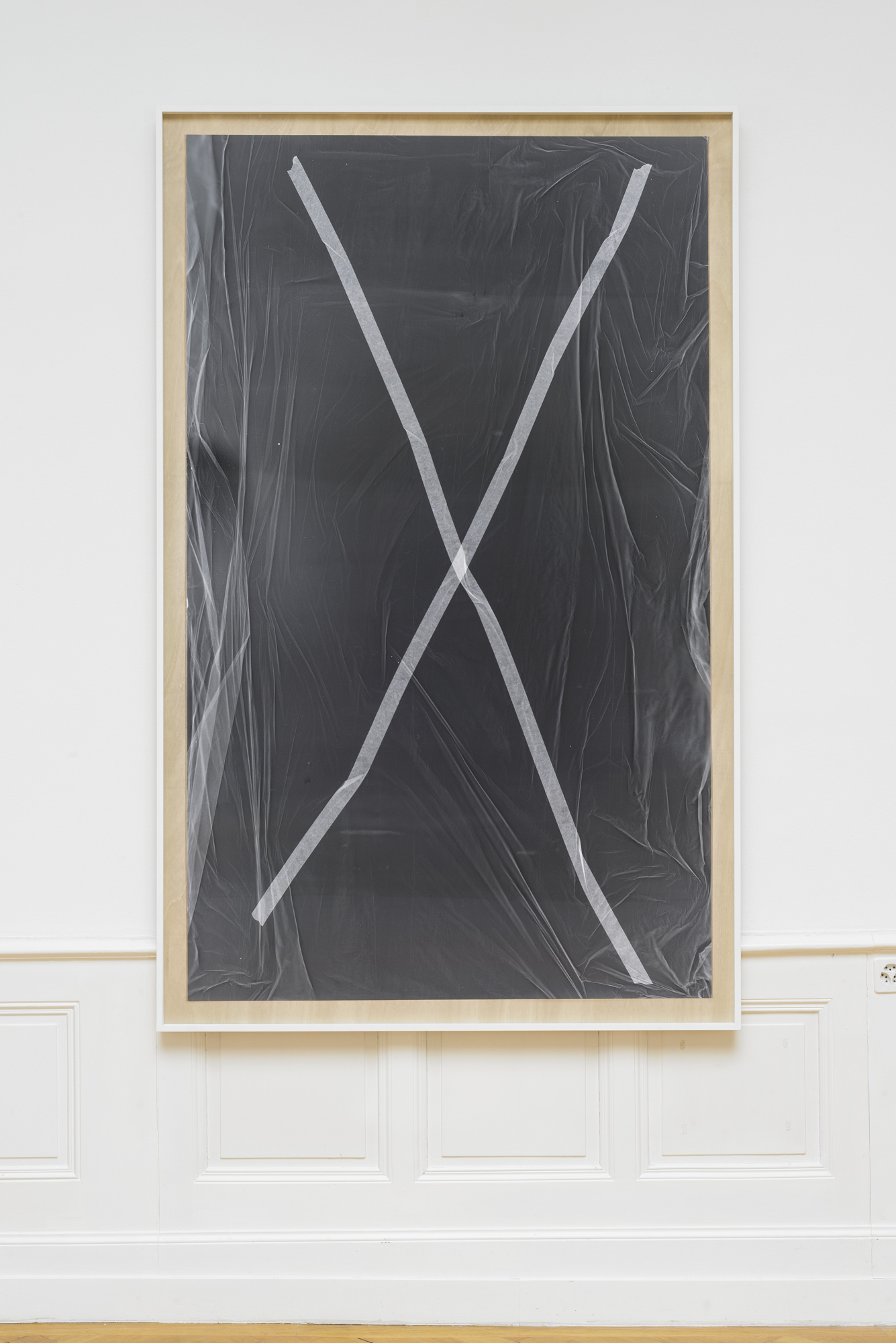
Yvan Alvarez, Meanwhile (photogram #3), photographic paper, frame, 222 x 140,5 x 4 cm, 2023
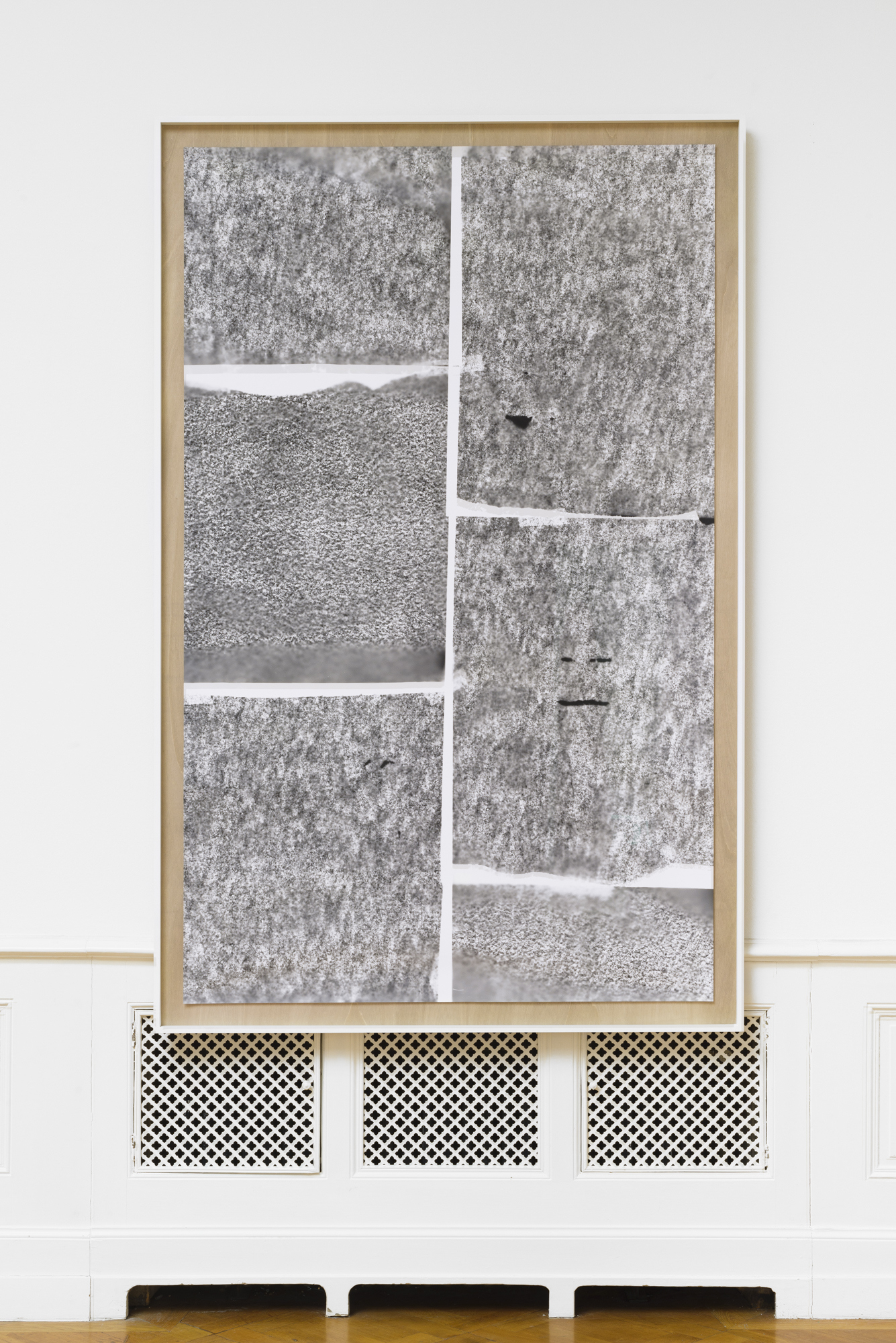
Yvan Alvarez, Meanwhile (photogram #5), photographic paper, frame, 222 x 140,5 x 4 cm, 2023
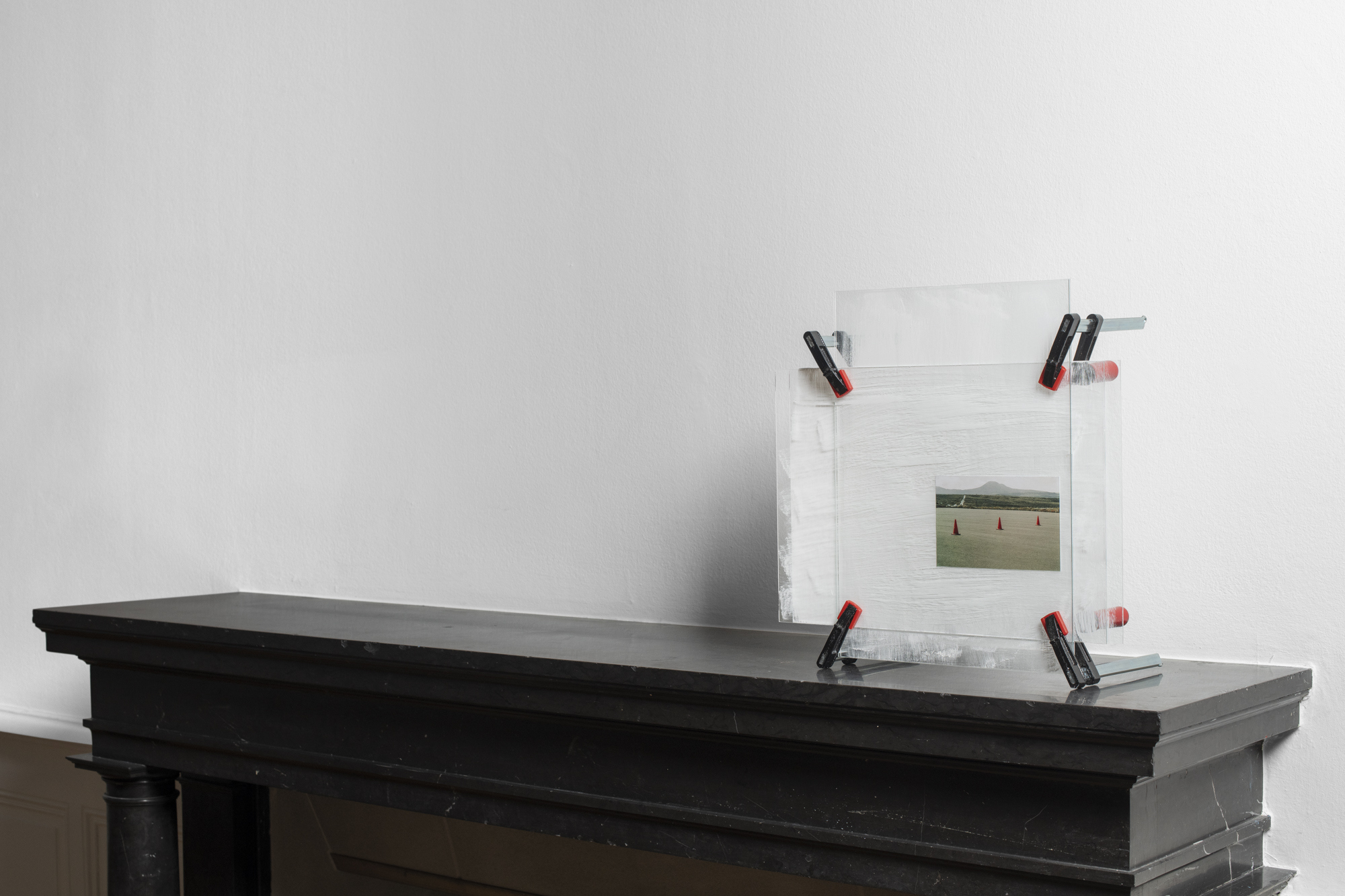
Yvan Alvarez, Frame (makeshift devices), inkjet print, glass, clamps, 43 x 44 x 21 cm, 2023
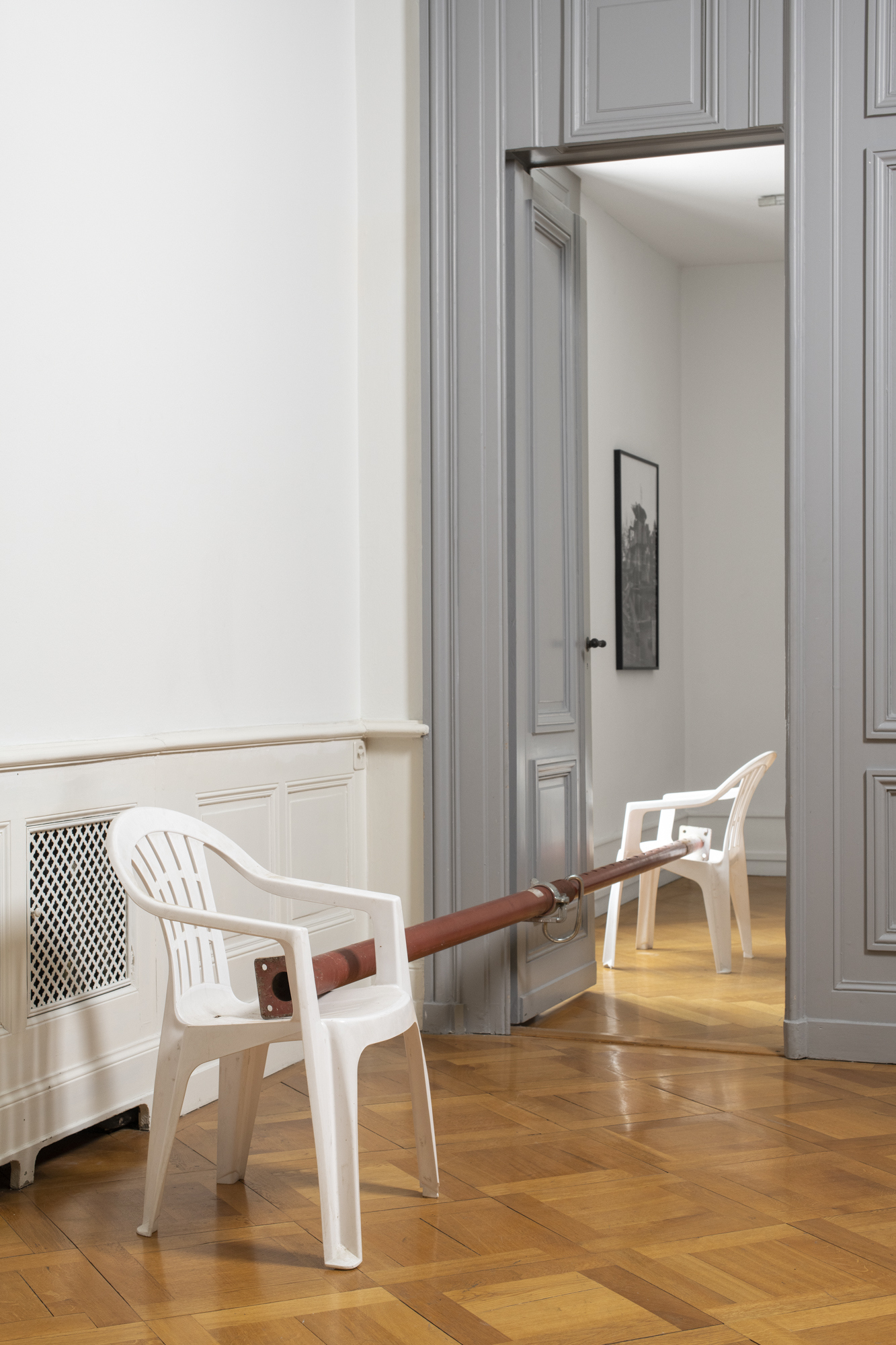
Yvan Alvarez, ZWISCHENRAUM, exhibition view, 2023
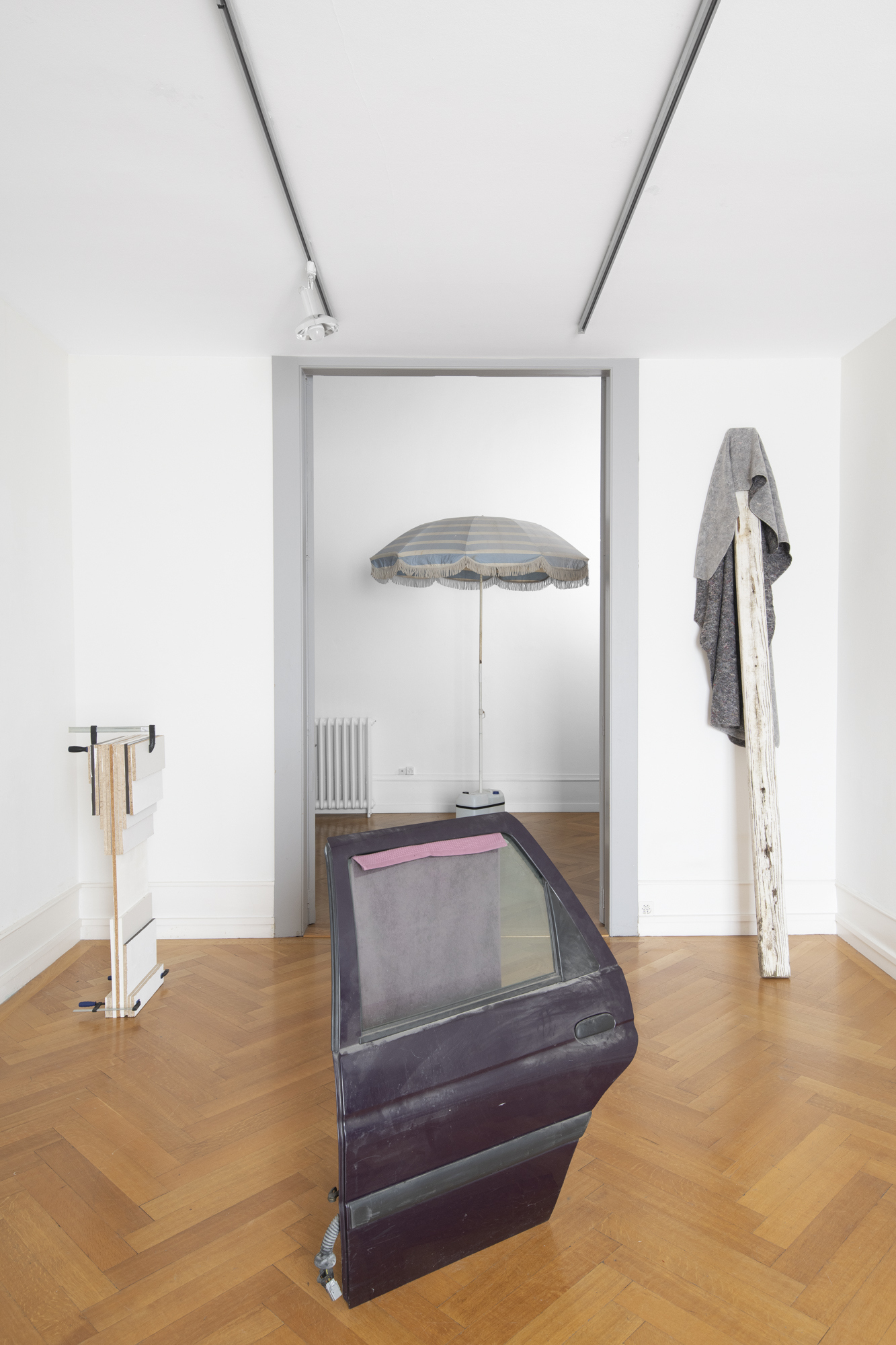
Yvan Alvarez, ZWISCHENRAUM, exhibition view, 2023

Yvan Alvarez, Sun, water and wind (makeshift devices), umbrella, umbrella base, canister, strap, water, 270 x ø 160 cm, 2023
The opposite of Geneva might be Naples. It’s a place where nonsense makes sense. It’s where the wild and undomesticated feel routine or even like old habits. Where everything that is old is also young. Where improvisation is less about freedom or invention and more about conformity and doing whatever everyone else is doing. It’s what happens to a city when people refuse to choose between order and chaos but prefer to consider both to be two equally important traditions that need to be upheld. The organized and the disorganized are impossible to distinguish from each other. I love Geneva, my hometown, but I also love Naples.
The last time I was in Naples was to visit the artist Jimmie Durham. Over wine, he told me about the difference between being more organized and being less organized. Architecture, he said, is nothing more than organized stones. Architectural styles and physical circumstances vary, and as each architect balances the physics of gravity, the laws of mechanical engineering, and various aesthetic or decorative registers, they organize their stones differently. And yet what bothered Jimmie about all this is not the physics or the decorations but the set of assumptions that hide behind each decision—the belief that stones need to be organized in a way that increases the strength and stability of the overall structure. The reason architects prefer stones with clean edges, for example, placed next to each other or on top of each other, is because they want their stones to remain in place for a long time, without toppling over should there be a gust of wind. They consider the fragile and the provisional to be forms of weakness, not strength. However, a culture that doesn’t value longevity and stability, but prefers itinerancy and improvisation, will make very different decisions about how to organize its stones. And not wanting to live in a world where stones have been organized according to values or principles that were foreign to him, Jimmie talked about his attempts to make stones less organized. He told me about his sculptures that are made by dropping boulders onto cars and by pulling cobble stones out of the street and throwing them at a fridge.
Learning from Jimmie and from Naples, I realized that the choice between the tamed or the wild—where one is friend and the other is foe, in whichever order fits your politics—is a false one. All objects are always both, cycling through a loop where raw materials become valuable, then waste, and then raw again. And art objects are also always both: to take an object from the world and place it into a gallery might trap it in an artificial space and give it a false sense of permanence, but it also functions the other way around—to make an artwork is to take an existing object or idea and to make it wild again, finding ways to rub away the familiarity of a chair, an apple, a color, or a shape until even the most commonplace becomes strange.
As time and space makes its marks on the surface of things, any object exists in a simultaneous state of order and disorder. A name or function that might be assigned to it is only ever provisional, up for grabs, not fully at ease—as if it always had one foot out the door, on its way to being something else entirely. While some people might prefer the new and polished, and others like the old and vintage, the reality is that objects are not new, old, useful, useless, available, or unavailable, but all of those at once.
What art can do is to interrupt. If objects, architecture, and even public space itself are phenomena that exist in a state of constant flux, an artist can place temporary deviations or obstructions in the way. Just as photography, in its most basic sense, involves interrupting the flow of time by capturing a fleeting moment on film, a sculpture could divert a form from its path through the world in a way that highlights its provisional and contingent state. Some artists might begin with raw materials, giving birth to new shapes, and others begin with something that already exists and, as Jasper Johns famously put it, do something to it and then do something else to it—stripping away established references, obstructing others, and breathing unfamiliar lives into familiar forms.
In the context of any conversation, an interruption is only ever temporary and provisional, but it still manages to break a rhythm and generate awareness about the spaces around the break. It doesn’t make a conversation stop, but forces it to change direction. To interrupt an object is to set aside the predictable differences between new or old, pristine or broken, and to take an object down its bare essentials in order to locate those marks that tell the story of its trajectory through the world. These bruises can then become compositional elements for a new form to exist, as if an object had suddenly chosen a different fork in the road. To interrupt involves an act of re-wilding—a process of rupture and rebirth where one force diverts the other, bumping the discarded off-course so that it can be led back towards the precious. It’s when ruin is balanced against renewal—or where one can no longer be distinguished from the other.
Anthony Huberman

